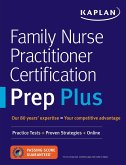Graham Sloan
Clinical Supervision in Mental
Graham Sloan
Clinical Supervision in Mental
- Broschiertes Buch
- Merkliste
- Auf die Merkliste
- Bewerten Bewerten
- Teilen
- Produkt teilen
- Produkterinnerung
- Produkterinnerung
Nursing research has focused on evaluating the effectiveness of clinical supervision, but there remains uncertainty as to what facets of clinical supervision are potent in realising effectiveness.
This book reports on an investigation on the practice of clinical supervision in mental health nursing. Incorporating three case studies, it illuminates the reciprocal interactions between clinical supervisor and supervisee. While the book uncovers a number of limitations in the process of clinical supervision and gaps in mental health nurses' level of competence in interpersonal relations it…mehr
Andere Kunden interessierten sich auch für
![Mental Health Nursing at a Glance Mental Health Nursing at a Glance]() Grahame SmithMental Health Nursing at a Glance38,99 €
Grahame SmithMental Health Nursing at a Glance38,99 €![Child and Adolescent Behavioral Health Child and Adolescent Behavioral Health]() Child and Adolescent Behavioral Health112,99 €
Child and Adolescent Behavioral Health112,99 €![Family Nurse Practitioner Certification Prep Plus Family Nurse Practitioner Certification Prep Plus]() Kaplan NursingFamily Nurse Practitioner Certification Prep Plus71,99 €
Kaplan NursingFamily Nurse Practitioner Certification Prep Plus71,99 €![Nurses! Test Yourself in Clinical Skills Nurses! Test Yourself in Clinical Skills]() Marian TraynorNurses! Test Yourself in Clinical Skills28,99 €
Marian TraynorNurses! Test Yourself in Clinical Skills28,99 €![Saunders Nursing Survival Guide: Critical Care & Emergency Nursing Saunders Nursing Survival Guide: Critical Care & Emergency Nursing]() Lori SchumacherSaunders Nursing Survival Guide: Critical Care & Emergency Nursing60,99 €
Lori SchumacherSaunders Nursing Survival Guide: Critical Care & Emergency Nursing60,99 €![Nursing Informatics Nursing Informatics]() Nursing Informatics64,99 €
Nursing Informatics64,99 €![Interpersonal Skills for Nurses and Health Care Professionals Interpersonal Skills for Nurses and Health Care Professionals]() Robert WondrakInterpersonal Skills for Nurses and Health Care Professionals68,99 €
Robert WondrakInterpersonal Skills for Nurses and Health Care Professionals68,99 €-
-
-
Nursing research has focused on evaluating the effectiveness of clinical supervision, but there remains uncertainty as to what facets of clinical supervision are potent in realising effectiveness.
This book reports on an investigation on the practice of clinical supervision in mental health nursing. Incorporating three case studies, it illuminates the reciprocal interactions between clinical supervisor and supervisee. While the book uncovers a number of limitations in the process of clinical supervision and gaps in mental health nurses' level of competence in interpersonal relations it provides a basis for a more critical approach to this important element of professional development.
Hinweis: Dieser Artikel kann nur an eine deutsche Lieferadresse ausgeliefert werden.
This book reports on an investigation on the practice of clinical supervision in mental health nursing. Incorporating three case studies, it illuminates the reciprocal interactions between clinical supervisor and supervisee. While the book uncovers a number of limitations in the process of clinical supervision and gaps in mental health nurses' level of competence in interpersonal relations it provides a basis for a more critical approach to this important element of professional development.
Hinweis: Dieser Artikel kann nur an eine deutsche Lieferadresse ausgeliefert werden.
Produktdetails
- Produktdetails
- Verlag: Wiley & Sons
- 1. Auflage
- Seitenzahl: 240
- Erscheinungstermin: 1. Mai 2006
- Englisch
- Abmessung: 229mm x 152mm x 14mm
- Gewicht: 360g
- ISBN-13: 9780470019887
- ISBN-10: 0470019883
- Artikelnr.: 20835357
- Herstellerkennzeichnung
- Libri GmbH
- Europaallee 1
- 36244 Bad Hersfeld
- gpsr@libri.de
- Verlag: Wiley & Sons
- 1. Auflage
- Seitenzahl: 240
- Erscheinungstermin: 1. Mai 2006
- Englisch
- Abmessung: 229mm x 152mm x 14mm
- Gewicht: 360g
- ISBN-13: 9780470019887
- ISBN-10: 0470019883
- Artikelnr.: 20835357
- Herstellerkennzeichnung
- Libri GmbH
- Europaallee 1
- 36244 Bad Hersfeld
- gpsr@libri.de
Graham Sloan is a Clinical Specialist in Cognitive Psychotherapy and works in Consulting and Clinical Psychology Services, NHS Ayrshire and Arran. He completed his PhD in May 2004 studying with the School of Nursing,Midwifery and Community Health, Glasgow Caledonian University. He has had several papers relating to clinical supervision and cognitive and behavioural psychotherapy published in the recent nursing literature and has presented at international conferences. He provides clinical supervision to mental health nurses, cognitive and behavioural psychotherapists, clinical psychologists and psychiatrists and provides education on clinical supervision and CBP within the Trust. He is also employed as a Visiting Lecturer at Glasgow Caledonian University.
About the Author.
Foreword.
Acknowledgements.
List of Figures.
List of Tables.
1. Introduction.
Background to the Study.
Initial Experiences
Development.
Current Experiences.
Clinical Supervision in Nursing.
Opportunity for Research.
2. Literature Review.
Introduction.
Literature Review Strategy.
Clinical Supervision: Growing Popularity in Nursing.
Political Influence.
Formats and Frameworks.
Clinical Supervision Idealised.
Benefit and Outcome Studies.
Reducing the Stress Experienced by Nurses.
Knowledge Development and Skills Acquisition.
Confirmation of the Nurse's Role.
Summary of Benefit and Outcome Studies.
Characteristics of the Clinical Supervisor.
Characteristics of a Good Supervisor: A Nursing Perspective.
Counselling, Psychology and Psychotherapy.
Interpersonal Interactions During Supervision.
Discussion.
Conclusion.
3. Methodological Considerations.
Introduction.
General Aim of the Study.
Research Questions.
Objectives of the Study.
Choice of Research Approach.
Illuminative Evaluation.
Previous Illuminative-evaluation Research.
Illuminative evaluation in Nursing Research.
Summary of Methodological Considerations.
Discussion of Data-collection Techniques.
Interview.
Audio-recording of Clinical Supervision.
Clinical Supervision Session Record.
Other Documents Relating to Clinical Supervision.
Critical Incident Journal.
Summary of Data-collection Techniques.
Data Analysis.
Content Analysis.
Thematic Analysis.
Analysis of Verbal Transactions.
The Learning Milieu.
Conclusion.
4. Analytic Framework.
Introduction.
Peplau's Theory of Interpersonal Relations.
Six Category Intervention Analysis.
Nurses' Interpersonal Skills.
Heron's Framework and Clinical Supervision.
Heron's Framework as an Analytic Tool.
Conclusion.
5. Study Design and Methods.
Introduction.
Location.
Population and Sampling Issues.
Case Sites, Participants and their Role in the Team.
Case Site One.
Staff complement for Case Site One.
Participants and their team role.
Case Site Two.
Staff complement for Case Site Two.
Participants and their team role.
Case Site Three.
Staff complement for Case Site Three.
Participants and their team role.
Case Site Four.
Instructional System.
Trust Discussion Paper.
Module Descriptor.
Recurring Themes in the Nursing Literature.
Clinical supervision as a supportive resource.
Managerial agendas encroaching on clinical supervision.
The broad scope of clinical supervision.
Data-collection Methods.
Interview.
Audio-recording of Supervision Sessions.
Audio-recording equipment.
Clinical Supervision Session Records.
Critical Incident Journal.
Summary of Data-collection Methods.
Triangulation.
Trustworthiness.
Data Analysis.
Ethical Considerations.
Ethical Approval and Access to Participants.
Conclusion.
6. Pilot Study.
Introduction.
Location, Participants and Access.
Case Site Description.
Staff Complement for Pilot Study Site.
Participants and their Team Role.
Data-collection Methods.
Interview.
Clinical Supervision Session Record.
Critical Incident Journal.
Audio-recording of Clinical Supervision.
Data Analysis.
Analysis of an Audio-recording of a Supervision Session.
Stimuli for the focus of supervision.
Structure.
Content.
Supervisor interventions.
Exploring the supervisee's work.
Taking the lead.
Suggesting an option.
Giving information.
Catalytic interventions.
Prescriptive interventions.
Informative interventions.
Supportive interventions.
Degenerate interventions.
The supervisee's contribution.
Obstacles to supervision.
Potential changes resulting from clinical supervision.
Conclusion.
7. Report of Findings and Discussion.
Introduction.
Objectives of the Study.
Objective 1.
Managerial agendas.
Clinical supervision as a therapeutic endeavour.
Client-related issues: absence of relating to the client.
The broad scope of clinical supervision.
Objective.
The routine: hierarchy.
The frequency and duration of sessions.
The supervisor's agenda.
The supervisee's contribution.
Overcoming the unhelpful aspects of clinical supervision.
Objective 3.
The stimuli for what is discussed during clinical supervision.
Preparation for clinical supervision.
Previous experiences of receiving clinical supervision.
Supervision module.
Objective 4.
Absence of a conceptual model.
Seeking information.
Information-giving.
Agreeing with the supervisee.
Suggesting an option.
Giving feedback.
Catalytic interventions.
Empathic divining.
Informative interventions.
Supportive interventions.
Prescriptive interventions.
Confronting interventions.
Cathartic interventions.
Delivery of two interventions simultaneously.
Catalytic degenerate interventions.
Cathartic degenerate interventions.
Prescriptive degenerate interventions.
Comparisons with previous research using Heron's framework.
Objective 5.
Objective 6.
Case Site One.
Case Site Two.
Case Site Three.
Conclusion.
8. Conclusion.
Introduction.
Major Insights Gained from the Study.
The Content of Clinical Supervision.
Interpersonal Interactions and their Influence on Content.
Organisational Factors and their Influence on the Supervisory Process.
The stimuli for what is discussed during clinical supervision.
Preparation for clinical supervision.
The routine.
Changes Reported from the Experience of Individual Clinical Supervision.
Illuminative Evaluation.
Study Design.
Thematic Analysis.
Analytic Framework.
Implications of these Insights.
Practice.
Nurse education.
Nursing research.
Limitations of the Study.
Researcher.
Participants.
Study Design and Methods.
Study site.
Critical incident journal.
Audio-recording supervision sessions.
Six Category Intervention Analysis.
Trustworthiness.
Contribution to Knowledge.
Clinical Supervision.
Nurse Education.
Nursing Research.
Six Category Intervention Analysis.
Conclusion.
Recommendations.
Appendices.
References.
Index.
Foreword.
Acknowledgements.
List of Figures.
List of Tables.
1. Introduction.
Background to the Study.
Initial Experiences
Development.
Current Experiences.
Clinical Supervision in Nursing.
Opportunity for Research.
2. Literature Review.
Introduction.
Literature Review Strategy.
Clinical Supervision: Growing Popularity in Nursing.
Political Influence.
Formats and Frameworks.
Clinical Supervision Idealised.
Benefit and Outcome Studies.
Reducing the Stress Experienced by Nurses.
Knowledge Development and Skills Acquisition.
Confirmation of the Nurse's Role.
Summary of Benefit and Outcome Studies.
Characteristics of the Clinical Supervisor.
Characteristics of a Good Supervisor: A Nursing Perspective.
Counselling, Psychology and Psychotherapy.
Interpersonal Interactions During Supervision.
Discussion.
Conclusion.
3. Methodological Considerations.
Introduction.
General Aim of the Study.
Research Questions.
Objectives of the Study.
Choice of Research Approach.
Illuminative Evaluation.
Previous Illuminative-evaluation Research.
Illuminative evaluation in Nursing Research.
Summary of Methodological Considerations.
Discussion of Data-collection Techniques.
Interview.
Audio-recording of Clinical Supervision.
Clinical Supervision Session Record.
Other Documents Relating to Clinical Supervision.
Critical Incident Journal.
Summary of Data-collection Techniques.
Data Analysis.
Content Analysis.
Thematic Analysis.
Analysis of Verbal Transactions.
The Learning Milieu.
Conclusion.
4. Analytic Framework.
Introduction.
Peplau's Theory of Interpersonal Relations.
Six Category Intervention Analysis.
Nurses' Interpersonal Skills.
Heron's Framework and Clinical Supervision.
Heron's Framework as an Analytic Tool.
Conclusion.
5. Study Design and Methods.
Introduction.
Location.
Population and Sampling Issues.
Case Sites, Participants and their Role in the Team.
Case Site One.
Staff complement for Case Site One.
Participants and their team role.
Case Site Two.
Staff complement for Case Site Two.
Participants and their team role.
Case Site Three.
Staff complement for Case Site Three.
Participants and their team role.
Case Site Four.
Instructional System.
Trust Discussion Paper.
Module Descriptor.
Recurring Themes in the Nursing Literature.
Clinical supervision as a supportive resource.
Managerial agendas encroaching on clinical supervision.
The broad scope of clinical supervision.
Data-collection Methods.
Interview.
Audio-recording of Supervision Sessions.
Audio-recording equipment.
Clinical Supervision Session Records.
Critical Incident Journal.
Summary of Data-collection Methods.
Triangulation.
Trustworthiness.
Data Analysis.
Ethical Considerations.
Ethical Approval and Access to Participants.
Conclusion.
6. Pilot Study.
Introduction.
Location, Participants and Access.
Case Site Description.
Staff Complement for Pilot Study Site.
Participants and their Team Role.
Data-collection Methods.
Interview.
Clinical Supervision Session Record.
Critical Incident Journal.
Audio-recording of Clinical Supervision.
Data Analysis.
Analysis of an Audio-recording of a Supervision Session.
Stimuli for the focus of supervision.
Structure.
Content.
Supervisor interventions.
Exploring the supervisee's work.
Taking the lead.
Suggesting an option.
Giving information.
Catalytic interventions.
Prescriptive interventions.
Informative interventions.
Supportive interventions.
Degenerate interventions.
The supervisee's contribution.
Obstacles to supervision.
Potential changes resulting from clinical supervision.
Conclusion.
7. Report of Findings and Discussion.
Introduction.
Objectives of the Study.
Objective 1.
Managerial agendas.
Clinical supervision as a therapeutic endeavour.
Client-related issues: absence of relating to the client.
The broad scope of clinical supervision.
Objective.
The routine: hierarchy.
The frequency and duration of sessions.
The supervisor's agenda.
The supervisee's contribution.
Overcoming the unhelpful aspects of clinical supervision.
Objective 3.
The stimuli for what is discussed during clinical supervision.
Preparation for clinical supervision.
Previous experiences of receiving clinical supervision.
Supervision module.
Objective 4.
Absence of a conceptual model.
Seeking information.
Information-giving.
Agreeing with the supervisee.
Suggesting an option.
Giving feedback.
Catalytic interventions.
Empathic divining.
Informative interventions.
Supportive interventions.
Prescriptive interventions.
Confronting interventions.
Cathartic interventions.
Delivery of two interventions simultaneously.
Catalytic degenerate interventions.
Cathartic degenerate interventions.
Prescriptive degenerate interventions.
Comparisons with previous research using Heron's framework.
Objective 5.
Objective 6.
Case Site One.
Case Site Two.
Case Site Three.
Conclusion.
8. Conclusion.
Introduction.
Major Insights Gained from the Study.
The Content of Clinical Supervision.
Interpersonal Interactions and their Influence on Content.
Organisational Factors and their Influence on the Supervisory Process.
The stimuli for what is discussed during clinical supervision.
Preparation for clinical supervision.
The routine.
Changes Reported from the Experience of Individual Clinical Supervision.
Illuminative Evaluation.
Study Design.
Thematic Analysis.
Analytic Framework.
Implications of these Insights.
Practice.
Nurse education.
Nursing research.
Limitations of the Study.
Researcher.
Participants.
Study Design and Methods.
Study site.
Critical incident journal.
Audio-recording supervision sessions.
Six Category Intervention Analysis.
Trustworthiness.
Contribution to Knowledge.
Clinical Supervision.
Nurse Education.
Nursing Research.
Six Category Intervention Analysis.
Conclusion.
Recommendations.
Appendices.
References.
Index.
About the Author.
Foreword.
Acknowledgements.
List of Figures.
List of Tables.
1. Introduction.
Background to the Study.
Initial Experiences
Development.
Current Experiences.
Clinical Supervision in Nursing.
Opportunity for Research.
2. Literature Review.
Introduction.
Literature Review Strategy.
Clinical Supervision: Growing Popularity in Nursing.
Political Influence.
Formats and Frameworks.
Clinical Supervision Idealised.
Benefit and Outcome Studies.
Reducing the Stress Experienced by Nurses.
Knowledge Development and Skills Acquisition.
Confirmation of the Nurse's Role.
Summary of Benefit and Outcome Studies.
Characteristics of the Clinical Supervisor.
Characteristics of a Good Supervisor: A Nursing Perspective.
Counselling, Psychology and Psychotherapy.
Interpersonal Interactions During Supervision.
Discussion.
Conclusion.
3. Methodological Considerations.
Introduction.
General Aim of the Study.
Research Questions.
Objectives of the Study.
Choice of Research Approach.
Illuminative Evaluation.
Previous Illuminative-evaluation Research.
Illuminative evaluation in Nursing Research.
Summary of Methodological Considerations.
Discussion of Data-collection Techniques.
Interview.
Audio-recording of Clinical Supervision.
Clinical Supervision Session Record.
Other Documents Relating to Clinical Supervision.
Critical Incident Journal.
Summary of Data-collection Techniques.
Data Analysis.
Content Analysis.
Thematic Analysis.
Analysis of Verbal Transactions.
The Learning Milieu.
Conclusion.
4. Analytic Framework.
Introduction.
Peplau's Theory of Interpersonal Relations.
Six Category Intervention Analysis.
Nurses' Interpersonal Skills.
Heron's Framework and Clinical Supervision.
Heron's Framework as an Analytic Tool.
Conclusion.
5. Study Design and Methods.
Introduction.
Location.
Population and Sampling Issues.
Case Sites, Participants and their Role in the Team.
Case Site One.
Staff complement for Case Site One.
Participants and their team role.
Case Site Two.
Staff complement for Case Site Two.
Participants and their team role.
Case Site Three.
Staff complement for Case Site Three.
Participants and their team role.
Case Site Four.
Instructional System.
Trust Discussion Paper.
Module Descriptor.
Recurring Themes in the Nursing Literature.
Clinical supervision as a supportive resource.
Managerial agendas encroaching on clinical supervision.
The broad scope of clinical supervision.
Data-collection Methods.
Interview.
Audio-recording of Supervision Sessions.
Audio-recording equipment.
Clinical Supervision Session Records.
Critical Incident Journal.
Summary of Data-collection Methods.
Triangulation.
Trustworthiness.
Data Analysis.
Ethical Considerations.
Ethical Approval and Access to Participants.
Conclusion.
6. Pilot Study.
Introduction.
Location, Participants and Access.
Case Site Description.
Staff Complement for Pilot Study Site.
Participants and their Team Role.
Data-collection Methods.
Interview.
Clinical Supervision Session Record.
Critical Incident Journal.
Audio-recording of Clinical Supervision.
Data Analysis.
Analysis of an Audio-recording of a Supervision Session.
Stimuli for the focus of supervision.
Structure.
Content.
Supervisor interventions.
Exploring the supervisee's work.
Taking the lead.
Suggesting an option.
Giving information.
Catalytic interventions.
Prescriptive interventions.
Informative interventions.
Supportive interventions.
Degenerate interventions.
The supervisee's contribution.
Obstacles to supervision.
Potential changes resulting from clinical supervision.
Conclusion.
7. Report of Findings and Discussion.
Introduction.
Objectives of the Study.
Objective 1.
Managerial agendas.
Clinical supervision as a therapeutic endeavour.
Client-related issues: absence of relating to the client.
The broad scope of clinical supervision.
Objective.
The routine: hierarchy.
The frequency and duration of sessions.
The supervisor's agenda.
The supervisee's contribution.
Overcoming the unhelpful aspects of clinical supervision.
Objective 3.
The stimuli for what is discussed during clinical supervision.
Preparation for clinical supervision.
Previous experiences of receiving clinical supervision.
Supervision module.
Objective 4.
Absence of a conceptual model.
Seeking information.
Information-giving.
Agreeing with the supervisee.
Suggesting an option.
Giving feedback.
Catalytic interventions.
Empathic divining.
Informative interventions.
Supportive interventions.
Prescriptive interventions.
Confronting interventions.
Cathartic interventions.
Delivery of two interventions simultaneously.
Catalytic degenerate interventions.
Cathartic degenerate interventions.
Prescriptive degenerate interventions.
Comparisons with previous research using Heron's framework.
Objective 5.
Objective 6.
Case Site One.
Case Site Two.
Case Site Three.
Conclusion.
8. Conclusion.
Introduction.
Major Insights Gained from the Study.
The Content of Clinical Supervision.
Interpersonal Interactions and their Influence on Content.
Organisational Factors and their Influence on the Supervisory Process.
The stimuli for what is discussed during clinical supervision.
Preparation for clinical supervision.
The routine.
Changes Reported from the Experience of Individual Clinical Supervision.
Illuminative Evaluation.
Study Design.
Thematic Analysis.
Analytic Framework.
Implications of these Insights.
Practice.
Nurse education.
Nursing research.
Limitations of the Study.
Researcher.
Participants.
Study Design and Methods.
Study site.
Critical incident journal.
Audio-recording supervision sessions.
Six Category Intervention Analysis.
Trustworthiness.
Contribution to Knowledge.
Clinical Supervision.
Nurse Education.
Nursing Research.
Six Category Intervention Analysis.
Conclusion.
Recommendations.
Appendices.
References.
Index.
Foreword.
Acknowledgements.
List of Figures.
List of Tables.
1. Introduction.
Background to the Study.
Initial Experiences
Development.
Current Experiences.
Clinical Supervision in Nursing.
Opportunity for Research.
2. Literature Review.
Introduction.
Literature Review Strategy.
Clinical Supervision: Growing Popularity in Nursing.
Political Influence.
Formats and Frameworks.
Clinical Supervision Idealised.
Benefit and Outcome Studies.
Reducing the Stress Experienced by Nurses.
Knowledge Development and Skills Acquisition.
Confirmation of the Nurse's Role.
Summary of Benefit and Outcome Studies.
Characteristics of the Clinical Supervisor.
Characteristics of a Good Supervisor: A Nursing Perspective.
Counselling, Psychology and Psychotherapy.
Interpersonal Interactions During Supervision.
Discussion.
Conclusion.
3. Methodological Considerations.
Introduction.
General Aim of the Study.
Research Questions.
Objectives of the Study.
Choice of Research Approach.
Illuminative Evaluation.
Previous Illuminative-evaluation Research.
Illuminative evaluation in Nursing Research.
Summary of Methodological Considerations.
Discussion of Data-collection Techniques.
Interview.
Audio-recording of Clinical Supervision.
Clinical Supervision Session Record.
Other Documents Relating to Clinical Supervision.
Critical Incident Journal.
Summary of Data-collection Techniques.
Data Analysis.
Content Analysis.
Thematic Analysis.
Analysis of Verbal Transactions.
The Learning Milieu.
Conclusion.
4. Analytic Framework.
Introduction.
Peplau's Theory of Interpersonal Relations.
Six Category Intervention Analysis.
Nurses' Interpersonal Skills.
Heron's Framework and Clinical Supervision.
Heron's Framework as an Analytic Tool.
Conclusion.
5. Study Design and Methods.
Introduction.
Location.
Population and Sampling Issues.
Case Sites, Participants and their Role in the Team.
Case Site One.
Staff complement for Case Site One.
Participants and their team role.
Case Site Two.
Staff complement for Case Site Two.
Participants and their team role.
Case Site Three.
Staff complement for Case Site Three.
Participants and their team role.
Case Site Four.
Instructional System.
Trust Discussion Paper.
Module Descriptor.
Recurring Themes in the Nursing Literature.
Clinical supervision as a supportive resource.
Managerial agendas encroaching on clinical supervision.
The broad scope of clinical supervision.
Data-collection Methods.
Interview.
Audio-recording of Supervision Sessions.
Audio-recording equipment.
Clinical Supervision Session Records.
Critical Incident Journal.
Summary of Data-collection Methods.
Triangulation.
Trustworthiness.
Data Analysis.
Ethical Considerations.
Ethical Approval and Access to Participants.
Conclusion.
6. Pilot Study.
Introduction.
Location, Participants and Access.
Case Site Description.
Staff Complement for Pilot Study Site.
Participants and their Team Role.
Data-collection Methods.
Interview.
Clinical Supervision Session Record.
Critical Incident Journal.
Audio-recording of Clinical Supervision.
Data Analysis.
Analysis of an Audio-recording of a Supervision Session.
Stimuli for the focus of supervision.
Structure.
Content.
Supervisor interventions.
Exploring the supervisee's work.
Taking the lead.
Suggesting an option.
Giving information.
Catalytic interventions.
Prescriptive interventions.
Informative interventions.
Supportive interventions.
Degenerate interventions.
The supervisee's contribution.
Obstacles to supervision.
Potential changes resulting from clinical supervision.
Conclusion.
7. Report of Findings and Discussion.
Introduction.
Objectives of the Study.
Objective 1.
Managerial agendas.
Clinical supervision as a therapeutic endeavour.
Client-related issues: absence of relating to the client.
The broad scope of clinical supervision.
Objective.
The routine: hierarchy.
The frequency and duration of sessions.
The supervisor's agenda.
The supervisee's contribution.
Overcoming the unhelpful aspects of clinical supervision.
Objective 3.
The stimuli for what is discussed during clinical supervision.
Preparation for clinical supervision.
Previous experiences of receiving clinical supervision.
Supervision module.
Objective 4.
Absence of a conceptual model.
Seeking information.
Information-giving.
Agreeing with the supervisee.
Suggesting an option.
Giving feedback.
Catalytic interventions.
Empathic divining.
Informative interventions.
Supportive interventions.
Prescriptive interventions.
Confronting interventions.
Cathartic interventions.
Delivery of two interventions simultaneously.
Catalytic degenerate interventions.
Cathartic degenerate interventions.
Prescriptive degenerate interventions.
Comparisons with previous research using Heron's framework.
Objective 5.
Objective 6.
Case Site One.
Case Site Two.
Case Site Three.
Conclusion.
8. Conclusion.
Introduction.
Major Insights Gained from the Study.
The Content of Clinical Supervision.
Interpersonal Interactions and their Influence on Content.
Organisational Factors and their Influence on the Supervisory Process.
The stimuli for what is discussed during clinical supervision.
Preparation for clinical supervision.
The routine.
Changes Reported from the Experience of Individual Clinical Supervision.
Illuminative Evaluation.
Study Design.
Thematic Analysis.
Analytic Framework.
Implications of these Insights.
Practice.
Nurse education.
Nursing research.
Limitations of the Study.
Researcher.
Participants.
Study Design and Methods.
Study site.
Critical incident journal.
Audio-recording supervision sessions.
Six Category Intervention Analysis.
Trustworthiness.
Contribution to Knowledge.
Clinical Supervision.
Nurse Education.
Nursing Research.
Six Category Intervention Analysis.
Conclusion.
Recommendations.
Appendices.
References.
Index.








